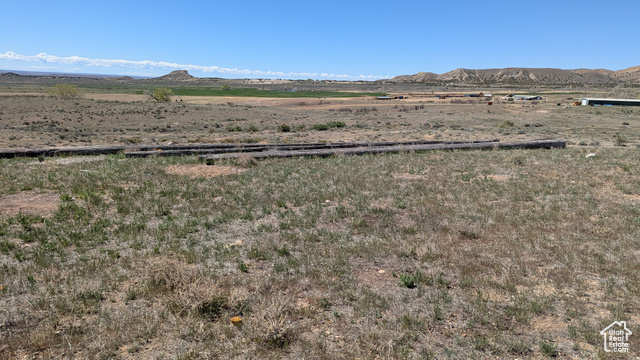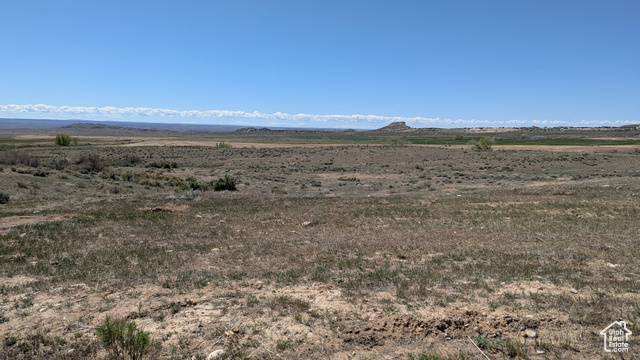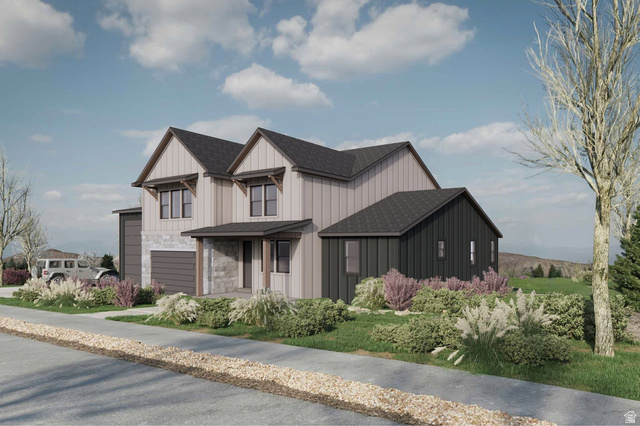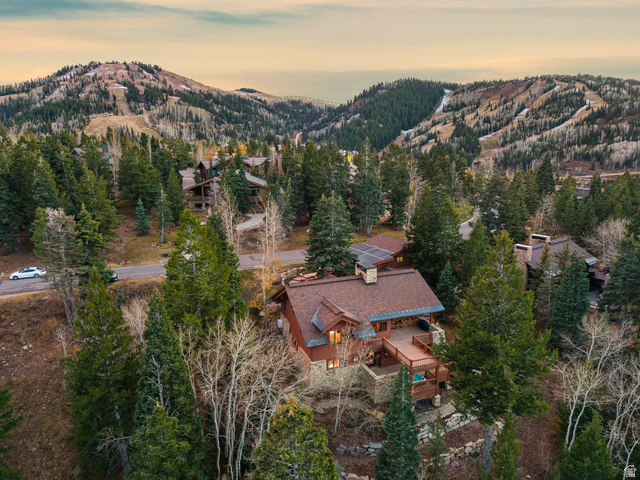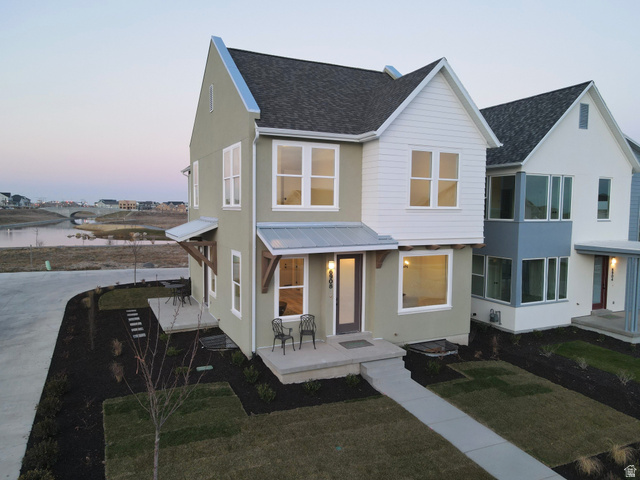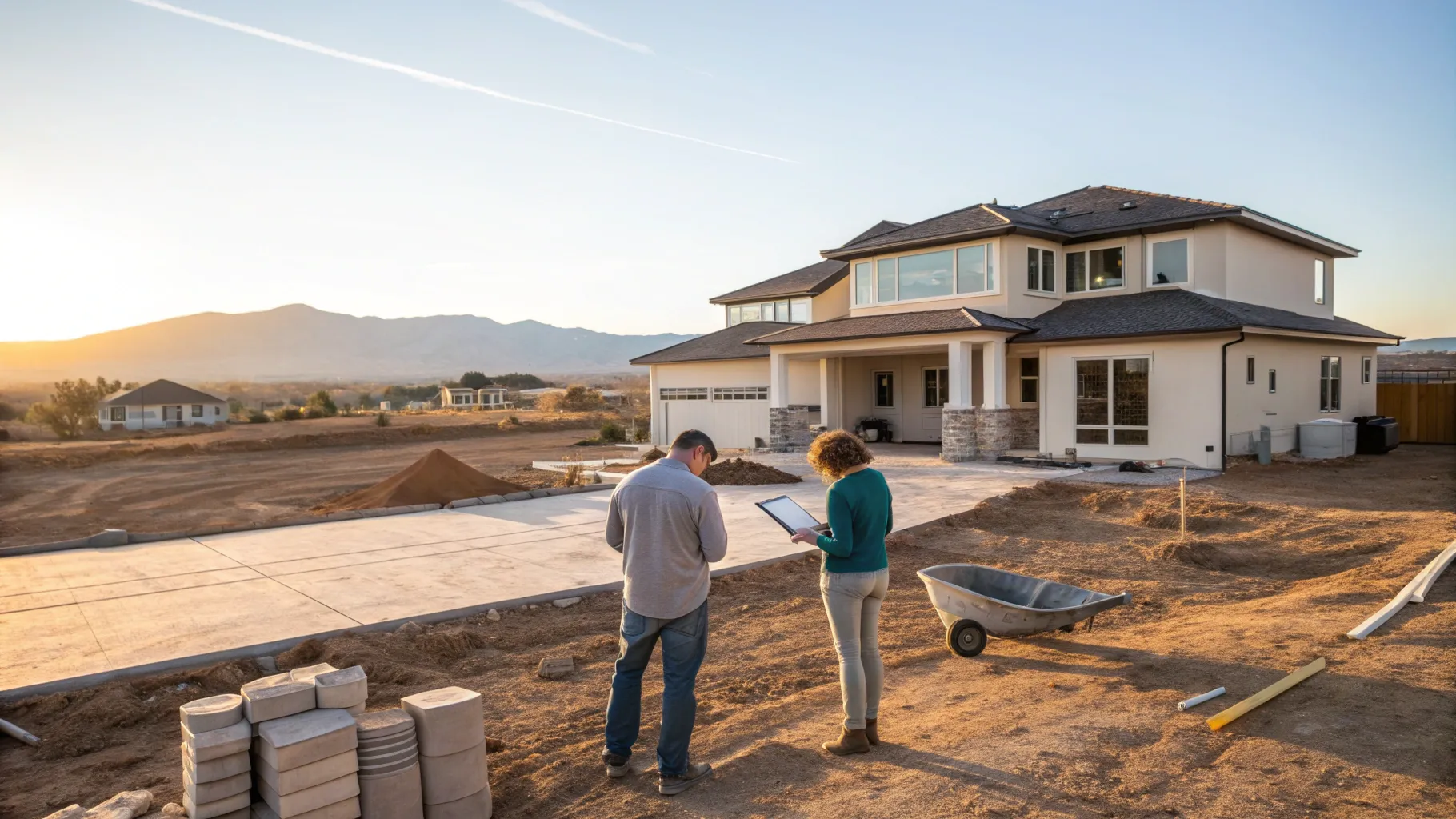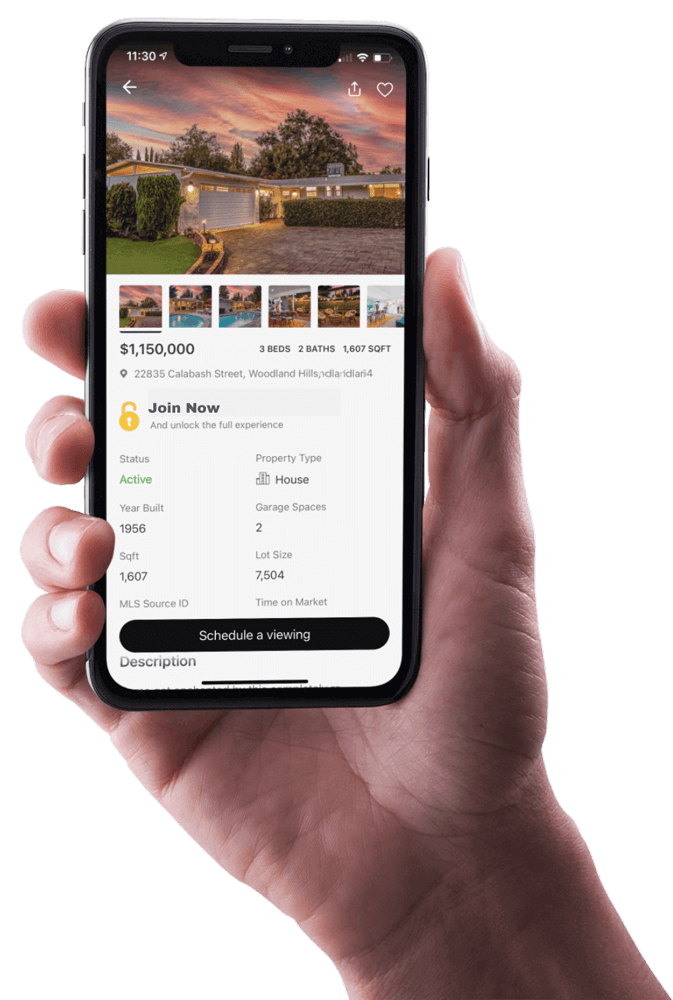Buying new construction in Utah offers modern layouts, energy-efficient systems, and neighborhoods built for today's lifestyles. However, the polished model homes and slick sales centers can hide recurring pitfalls that add thousands of dollars and months of stress.
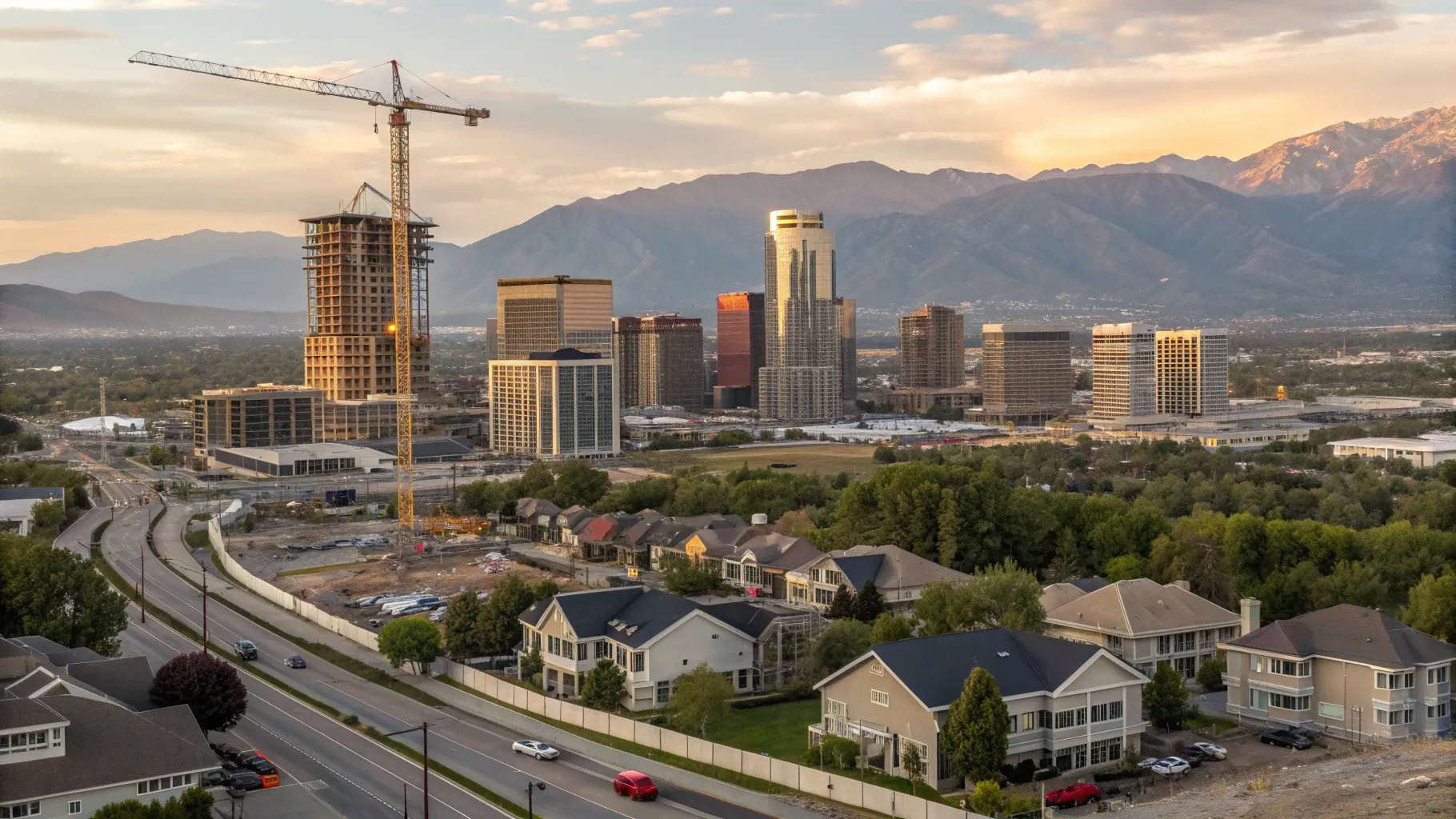
Utah is undergoing a sweeping transformation. Rapid population growth, major infrastructure projects, and unprecedented private investment are reshaping neighborhoods, downtown skylines, and entire municipalities. This analysis identifies ten Utah cities and regions poised for the most significant change over the coming years, explains why that change is happening, and outlines the implications for homebuyers, sellers, renters, and investors. The goal is to equip readers with a clear picture of what to expect, where opportunities and challenges lie, and practical strategies for navigating a quickly evolving market.
Across the Wasatch Front and into southern Utah, growth patterns are driven by similar forces: expanding transportation corridors, tech and data center investment, large-scale master-planned communities, and the cascading demand for housing that follows job creation. Each locale in this list has a distinct character and a specific set of catalysts that will define its trajectory. Below is a deep-dive on each of the ten areas, complete with development highlights, market implications, and tactical guidance for various types of residents and investors.
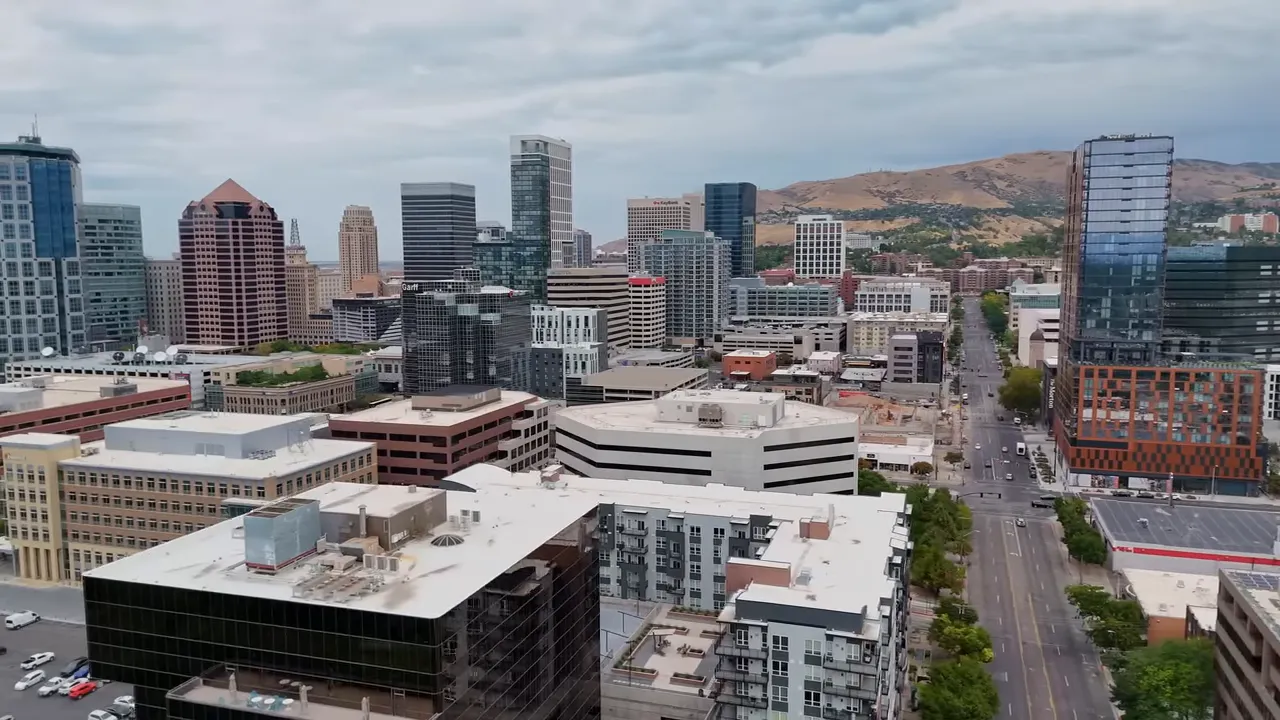
Table of Contents
- Salt Lake City — Urban vertical growth and new entertainment districts
- Saratoga Springs — Lakeside neighborhoods and freeway connectivity
- Eagle Mountain — Massive master-plans and tech infrastructure
- Lehi — The beating heart of Silicon Slopes
- American Fork — Downtown revitalization and healthcare expansion
- Syracuse — West Davis Corridor fuels suburban development
- Spanish Fork & Springville — Southern corridor retail and jobs
- Herriman — Building a new west-side city center
- Tooele — Affordable growth and a release valve for constrained housing markets
- St. George & Washington City (Washington County) — Southern Utah’s metropolitan boom
Introduction: Why these places, and why now?
Population migration patterns, remote-work flexibility, and the expansion of Utah’s technology and logistics sectors have created a demand surge for new housing and commercial space. Transportation projects—new freeways, extensions, and mass transit upgrades—are unlocking areas that were previously considered remote or impractical for daily commuting. At the same time, large employers and infrastructure projects such as data centers are catalyzing secondary investments, which then create the need for retail, healthcare, schools, and other community services.
Growth is rarely uniform. A high-rise district in a downtown core and a master-planned suburb 30 miles away answer different demands. The cities analyzed below have been selected because they either (a) already show concentrated development activity, (b) have planned major projects that will materially change their character, or (c) are positioned to capture spillover growth from more expensive or congested neighbors.
1. Salt Lake City — Vertical transformation and downtown density
Salt Lake City is entering a phase of pronounced vertical growth. Several recently completed and proposed high-rise towers are reshaping the skyline and the urban fabric. Commercial and residential towers such as the Astro Tower and projects in the pipeline (e.g., Kensington Tower and other downtown mixed-use developments) are adding floor plates and occupancy to the city core, increasing the number of residents and workers who live downtown.
Drivers: The primary drivers include continued demand for urban living and proximity to employment centers, an active commercial development pipeline, and public and private investments in entertainment and sports districts. A proposed sports and entertainment district on the west side of downtown, combined with expansions in the power district and the Salt Lake City International Airport multi-phase expansion, is enhancing Salt Lake City’s role as a regional hub—both for business and for tourism.
Market implications: Increasing density typically leads to upward pressure on rents and condo prices near transit nodes and downtown amenities. Investors should expect stronger demand for downtown apartments, short-term rentals in tourist-oriented pockets, and office-to-residential conversion opportunities as companies reconfigure space usage. For homebuyers who prefer urban life, more inventory will likely come online, but competition remains intense for well-located units.
Community and transportation impacts: As downtown densifies, traffic patterns will change, and public transit ridership is likely to increase. The airport expansion will improve international connectivity, supporting conventions, relocated corporate headquarters, and a larger hospitality sector. Sugar House and the Granary District are also seeing growth—expanding the urban footprint beyond strictly downtown areas with new retail, entertainment, and startup-friendly office space.
Practical guidance:
- Buyers seeking urban lifestyle should prioritize proximity to transit stations and planned entertainment or mixed-use corridors to future-proof daily convenience and resale appeal.
- Investors should evaluate multi-family fundamentals near downtown areas, considering vacancy trends and rent growth tied to employment expansion.
- Sellers with central properties may find timing favorable in the next several years, especially as demand for walkable, amenity-rich neighborhoods grows.
2. Saratoga Springs — Rapid lakeside expansion and connectivity
Saratoga Springs has evolved from a lakeside enclave to one of the fastest-growing cities in Utah County. The growth is concentrated along Utah Lake’s shoreline, where master-planned neighborhoods are rising and residential developers are capitalizing on scenic views and relative affordability compared to core parts of the Wasatch Front.
Infrastructure catalysts: Pioneer Crossing has already become an essential east–west arterial that ties Saratoga Springs to major employment centers. The Mountain View Corridor expansion and new freeway connectors, which link through Lehi and to I-15 and Eagle Mountain, are poised to change commuting dynamics and integrate Saratoga Springs more tightly into the Utah County transportation network.
Market implications: With freeway access and new residential inventory, property values are expected to appreciate at above-average rates compared to other parts of the Wasatch Front. However, the pace of commercial development—retail centers, entertainment, and service industries—lags demand. This can lead to residents travelling farther for some services until commercial projects catch up.
Risks and considerations: Rapid residential growth can outpace school capacity, municipal service delivery, and utility expansions. Prospective buyers should confirm school-boundaries, planned infrastructure projects, and build-out timelines for neighborhoods. Investors should watch for appreciation driven by transportation improvements; timing acquisitions before freeway completion often yields stronger returns.
Practical guidance:
- Homebuyers seeking new construction should examine builders’ phasing plans and infrastructure commitments, including water and sewer capacity.
- Investors should consider single-family rental demand driven by families priced out of central Utah County, and track the introduction of commercial nodes to predict rent uplift.
- Long-term residents should prepare for lifestyle shifts: more traffic during peak hours, increasing local retail, and evolving community identity.
3. Eagle Mountain — Master-plans, tech infrastructure, and long-term growth
Eagle Mountain sits directly west of Saratoga Springs and is transitioning from farmland to one of the state’s most dynamic long-term growth corridors. Massive master-plan communities such as Firefly (planned for roughly 8,000 homes) are in early phases. Once these communities mature, they will require retail, schools, and transportation investments that accelerate local job creation and economic activity.
Tech and data center investments: A major catalyst for Eagle Mountain’s growth is large-scale tech infrastructure investments. A multi-billion dollar data center has been constructed by a global technology company; adjacent land purchases by other tech giants—such as the acquisition of large parcels by Google—signal a strategic investment in the area’s capacity to host large-scale computing operations.
Why tech matters: Data centers are heavy users of power and network infrastructure. Their presence creates demand for local skilled labor, spurs secondary providers (maintenance, logistics), and attracts further corporate interest. The clustering effect produces regional economic development that benefits housing demand, retail, and supporting services.
Infrastructure and community services: Road expansions, fiber optic deployments, new schools, and utility upgrades have been planned or are underway. These investments will reduce travel times and make Eagle Mountain more accessible to employers and commuters. The timing of these infrastructure rollouts is crucial for market performance—early adopters in neighborhoods supported by planned utilities often see earlier appreciation.
Practical guidance:
- Buyers and developers should track utility capacity (water, power, fiber) and school capacity timelines—these often define a neighborhood’s livability during initial phases.
- Investors seeking long-term capital appreciation may prefer land- or lot-based investments early in master-planned rollouts where builders and community amenities are phased over a decade.
- Homeowners should plan for staged community build-outs: initial years may have fewer local services and longer commutes until commercial zones and transit links are established.
4. Lehi — Silicon Slopes and continued office growth
Lehi, at the core of Utah’s Silicon Slopes, remains a powerful magnet for tech employers, startups, and satellite offices for national firms. Its business parks and office towers house companies ranging from software and digital-marketing firms to enterprise technology providers. Corporate anchors such as Adobe and Podium have helped establish Lehi as an established technology hub.
Office and residential dynamics: Despite recent growth, Lehi still has more room for expansion. New office towers and corporate relocations continue, and the area’s neighborhoods—like Traverse Mountain—are expanding with higher-end housing and lifestyle retail. The presence of dedicated employment centers attracts commuters and stimulates demand for short commute neighborhoods and transit-oriented developments.
Transportation projects: Interstate and connector improvements, including expansions of I-15 and connectors to the Mountain View Corridor, are central to the region’s ability to absorb additional workers. Traffic congestion has increased along key arterials, but major infrastructure projects are in progress to address bottlenecks.
Market implications: As Lehi’s tech ecosystem deepens, demand for rental housing near transit or within short commutes of major tech campuses will increase. Office leasing demand remains relatively healthy, but investors should account for cyclical office market dynamics and the risk of remote-work adoption changing space needs.
Practical guidance:
- Renters and buyers who prioritize proximity to major employers should evaluate commute times and available transit options, particularly as new connector roads open.
- Investors should monitor vacancy and leasing rates in office properties to identify conversion opportunities or to time investments in multifamily near employment centers.
- Local governments and developers should coordinate land-use policies to balance commercial and residential development, mitigating traffic and preserving community amenities.
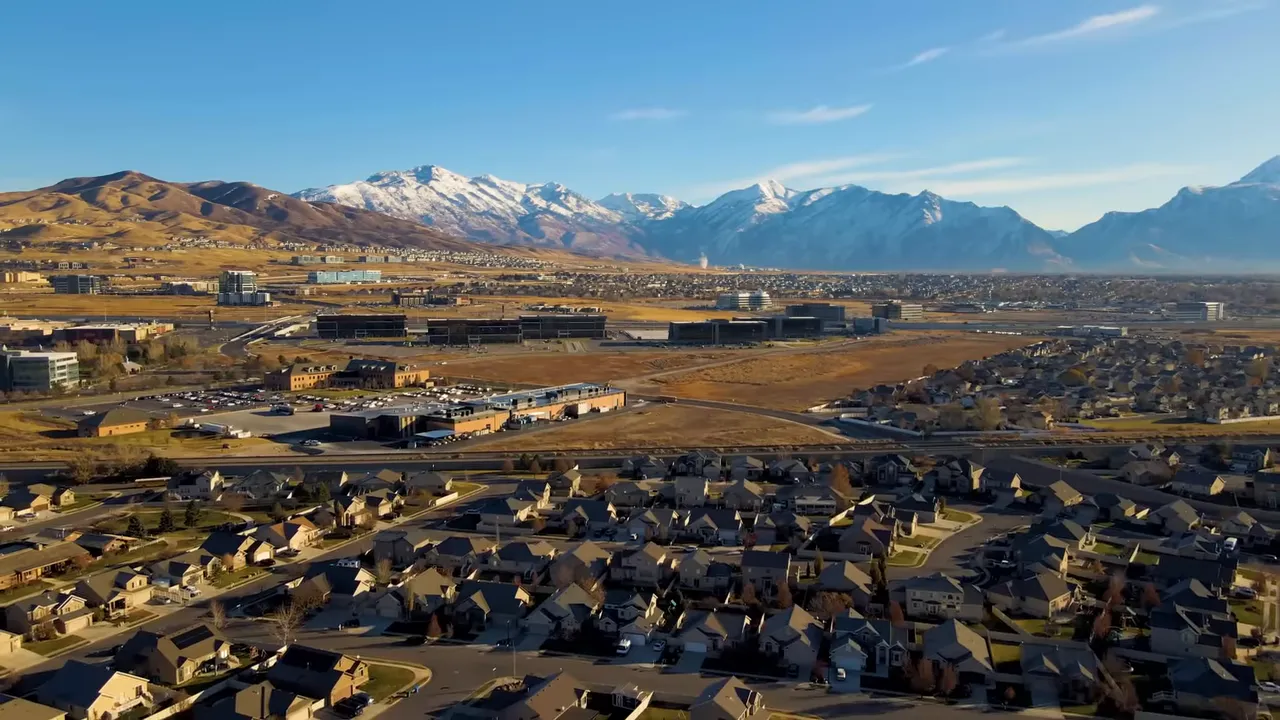
5. American Fork — Downtown revitalization and healthcare expansion
American Fork is quietly reinventing itself from a pass-through city into a community with increasing destination appeal. Strategic downtown revitalization projects are adding housing, retail, and restaurants designed to create an authentic city center rather than a highway-adjacent suburb. Improvements in transit—particularly expansions in commuter rail service—are adding commuting convenience for residents working in neighboring employment centers.
Healthcare and regional services: Expanding medical facilities and hospital services are turning American Fork into a regional healthcare hub. Medical job creation stabilizes local economies because healthcare employment is typically resilient and includes both full-time and specialty roles that demand proximate housing options. The presence of expanded healthcare services also supports longer-term value for nearby residential real estate.
Urban design and liveability: Downtown revitalization emphasizes walkability and mixed-use development, which appeals to families and professionals seeking community-oriented living. The combination of downtown amenities and convenient access to major employment corridors makes American Fork increasingly attractive to a demographic mix of families, young professionals, and commuters.
Practical guidance:
- Buyers seeking a balance of community feel and commuter convenience should evaluate downtown new-builds and townhome offerings as potential long-term winners for lifestyle and resale.
- Sellers with properties near revitalization corridors may see enhanced property values over time, especially as retail activation continues.
- Investors focusing on the rental market should prioritize units near transit nodes and healthcare employment centers to benefit from steady demand.
6. Syracuse — West Davis Corridor and suburban expansion
Syracuse’s trajectory is shifting dramatically due to the West Davis Corridor, a new freeway designed to unlock development potential along the western edge of Davis and Weber counties. This corridor provides faster, more direct access to Salt Lake City and other employment centers, making Syracuse a more feasible option for daily commuters.
Master-planned communities and amenities: Developers are launching large-scale planned communities, commercial centers, and schools to serve an influx of new residents. Syracuse’s transition resembles the growth pattern of other Wasatch Front suburbs two decades earlier—rapid residential build-out followed by phased commercial and public infrastructure enhancements.
Market implications: Syracuse represents a strong growth play for investors and homebuyers seeking appreciation potential. As transportation infrastructure completes, land values and housing demand commonly accelerate. However, early phases may have limited local amenities, necessitating patience for full community build-out.
Practical guidance:
- Buyers looking for appreciation should consider early neighborhoods with planned connections to the West Davis Corridor.
- Investors should track master-plan approvals and school siting decisions; the presence of solid public amenity planning often correlates with long-term neighborhood desirability.
- Local officials and planners must ensure schools and public services scale with residential build-out to preserve quality of life.
7. Spanish Fork & Springville — Southern corridor growth and new regional retail
Spanish Fork and Springville, historically bedroom communities south of Provo, are becoming regional economic engines. A notable headline for Springville is the planned opening of Utah’s first Buckeyes—the high-profile convenience and retail concept that has driven attention and economic activity in other states. Such high-profile retail anchors bring jobs, foot traffic, and infrastructure improvements.
Retail and employment hubs: Spanish Fork’s attraction of big-box retail and commercial centers will broaden shopping and employment options for residents in southern Utah County. The increase in local retail reduces the need for long commutes to find goods and services, contributing to stronger local capture of consumer spending.
Housing and affordability: Compared to northern parts of Utah County and the Salt Lake Valley, Spanish Fork and Springville often offer more affordable housing options. This affordability is mutually reinforcing: as employers and retail locate nearby, households seeking lower-cost alternatives will find these cities attractive.
Practical guidance:
- Homebuyers seeking value should consider inventory in Spanish Fork and Springville but should evaluate commute times and planned retail/phasing dates to anticipate near-term quality-of-life improvements.
- Investors should assess demand for retail-facing properties and for single-family rentals serving families priced out of neighboring markets.
- Community leaders should plan for water, transportation, and school capacity as retail and housing demand expand.
8. Herriman — Creating a new west-side downtown
Herriman, previously perceived as the far edge of the Salt Lake Valley, is intentionally developing a downtown identity. Plans for a city center include mixed-use retail, residential offerings, and office space designed to anchor Herriman as a distinct urban node on the valley’s west side.
Planned communities and Daybreak-style influence: Herriman’s suburban product is expanding in the model of planned communities that prioritize parks, trails, and neighborhood centers—akin to established developments such as Daybreak. The Mountain View Corridor expansion enhances connectivity and will make Herriman a more logical option for those seeking newer homes with community-oriented amenities.
Market implications: Building a downtown and enhanced connectivity tends to uplift nearby property values and attract both families and young professionals. The challenge is coordinating private development and public infrastructure to ensure the city center becomes viable and richly amenitized rather than a collection of isolated projects.
Practical guidance:
- Buyers should consider the long-term plan for Herriman’s city center and prioritize parcels and homes that will remain attractive as amenities evolve.
- Investors evaluating multi-family opportunities should seek proximity to planned transit corridors and mixed-use zones to maximize occupancy and rent growth potential.
- Local planners should sequence commercial and residential development to support healthy retail capture and pedestrian-friendly streetscapes.
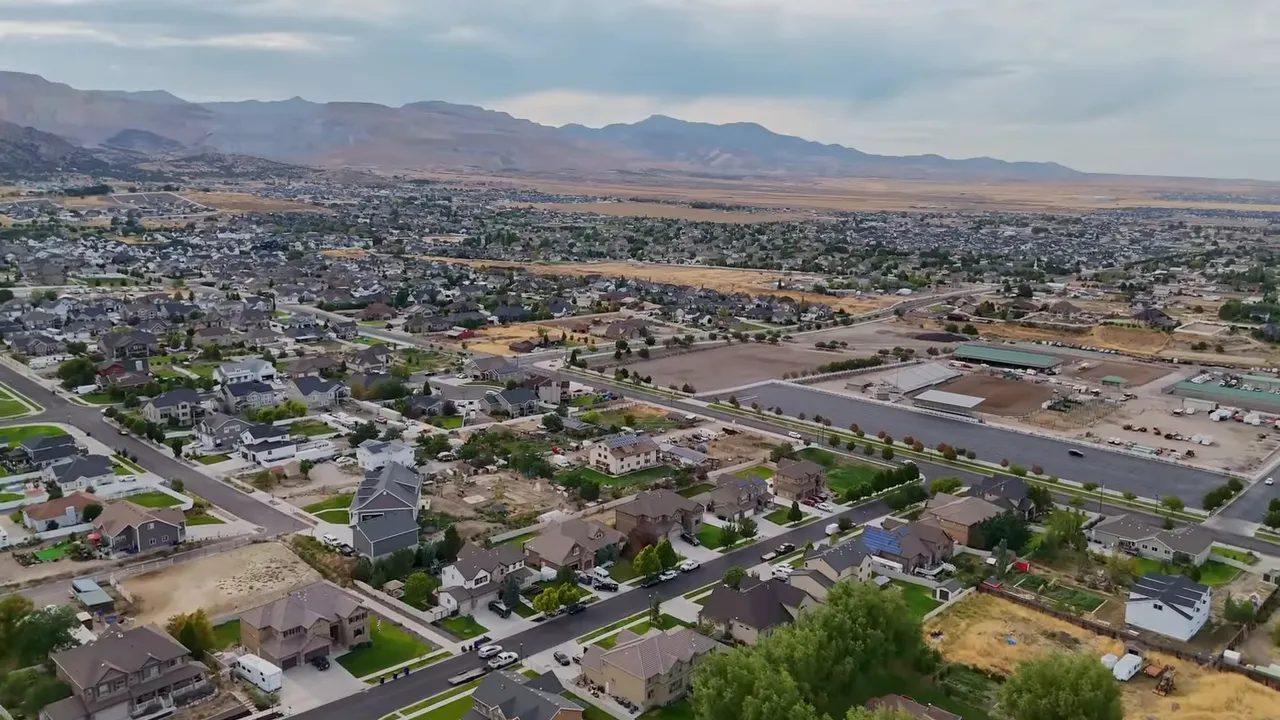
9. Tooele — Affordable expansion and a new housing release valve
Tooele, a name sometimes mispronounced but an increasingly relevant housing market, is positioned to absorb growth as central valley housing becomes less attainable. Previously marketed as "too far away," Tooele benefits from available land, improving freeway connections (I-80 and associated arterials), and the potential to deliver more affordable housing options.
Affordability and growth dynamics: Tooele’s large developable parcels allow builders to construct single-family homes and subdivisions at price points lower than core Salt Lake or Utah counties. As housing demand pressures increase across the Wasatch Front, Tooele serves as an important release valve—offering buyers a chance to enter the market while still being commutable, especially with improving infrastructure.
Economic diversification: Commercial projects that retain consumer spending locally are beginning to appear, reducing outbound trips for shopping and services. As retail nodes and employment centers expand, Tooele’s local economy gains resilience, further entrenching population growth.
Practical guidance:
- Buyers seeking lower entry prices should confirm commute times and planned infrastructure upgrades; new freeway or interchange work often marks inflection points for appreciation.
- Investors looking at long-term appreciation can consider early parcels in master-planned Tooele developments but should account for infrastructure build-out timelines.
- Municipal leaders must manage the balance between providing affordable housing options and investing in utilities, water supply, and transportation to support growth sustainably.
10. St. George & Washington City (Washington County) — The southern boomtown
St. George and Washington City have moved beyond their reputation as primarily retiree or snowbird destinations. Rapid year-round population growth driven by migration from other states, amenity-rich master-planned developments like Desert Color, and quality-of-life attractions—such as proximity to Zion National Park and a warm, desert climate—have elevated this region to one of the fastest-growing metropolitan areas in the nation.
Master-planned communities and public infrastructure: New master-planned communities are adding thousands of homes, and the region is building hospitals, schools, and commercial corridors to serve a rapidly expanding population. These investments create local job growth and stimulate additional private investment.
Water scarcity and sustainability: The primary constraint for Southern Utah is water. Growth must be balanced with available resources and enhanced conservation strategies. Local governments are actively implementing water conservation and planning strategies to ensure sustainable expansion. Water considerations will continue to influence development density, landscaping norms, and building codes.
Market implications: Demand for both primary residences and second homes remains high. This dual demand—families relocating permanently and second-home buyers seeking a warm climate—supports a resilient housing market, though volatility may emerge if water scarcity or policy changes constrain supply growth.
Practical guidance:
- Buyers should consider water-use restrictions and long-term supply plans when purchasing in Washington County; xeriscaping and water-efficient home systems may become increasingly important to preserve property value.
- Investors in vacation or short-term rental markets should monitor local regulations and supply dynamics to assess future cash flow and occupancy trends.
- Prospective residents should evaluate healthcare access, school quality, and seasonal population variation to ensure lifestyle expectations match reality.
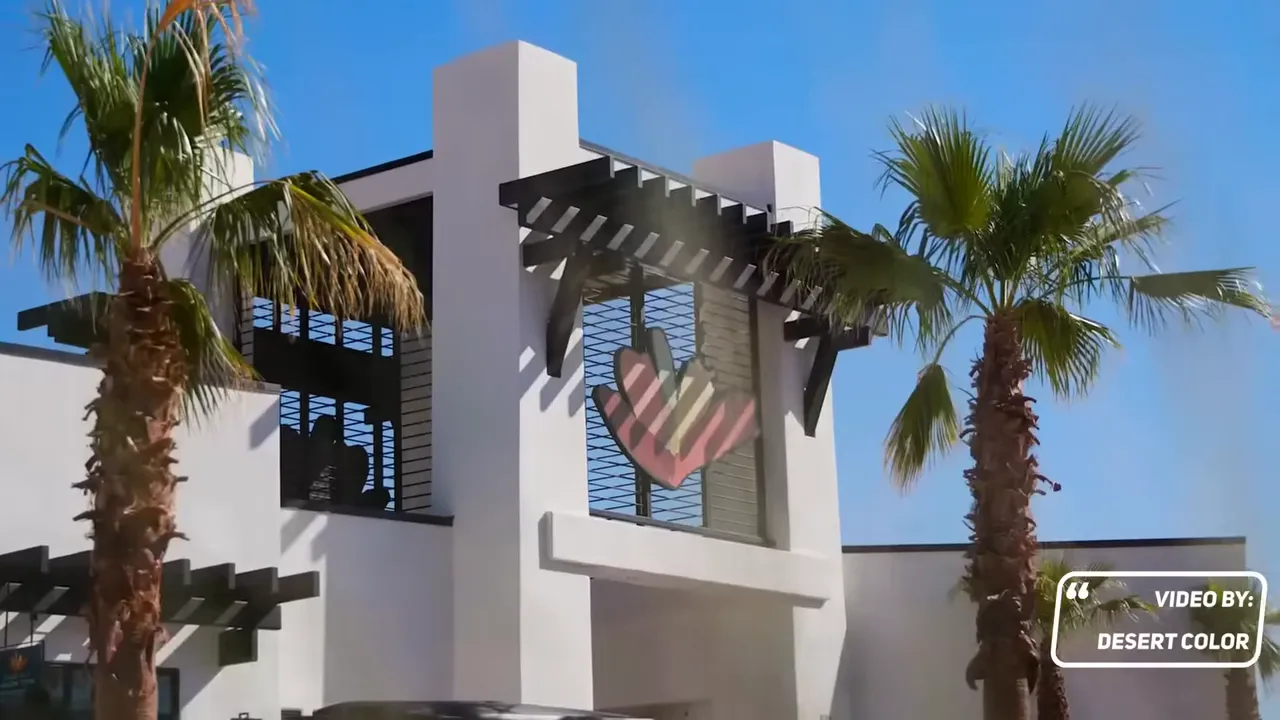
Cross-cutting themes, risks, and timelines
Several cross-cutting patterns appear across these ten areas:
- Transportation unlocks land: New freeways and corridor projects change the relative desirability of neighborhoods almost immediately. Areas once considered remote become attractive once commuting times drop.
- Anchor investments matter: Major projects—data centers, corporate land buys, retail anchors—signal long-term commitment to an area and often trigger a wave of secondary investment.
- Infrastructure lag can create friction: Roads, schools, and utilities often trail housing starts, creating short-term pain points that must be managed by local authorities and builders.
- Water and resources constrain growth: Especially in southern Utah, water availability will shape the pace and pattern of expansion.
Timelines: Not all growth is immediate. Some projects yield quick neighborhood activation (retail centers, anchor stores), while others, such as full master-plan build-outs, can take 10–20 years. Investors and prospective residents should evaluate both short-term catalysts (road completions, retail opening) and long-term structural investments (airport expansions, major corporate data centers) to time decisions.
Practical strategies for different audiences
For homebuyers
Homebuyers looking to move to Utah or relocate within the state should match lifestyle priorities with local trajectories. Urban-oriented buyers should weigh downtown Salt Lake City’s growing high-rise inventory and transit access. Suburban buyers should evaluate freeway and connector projects to reduce commute times. For affordability, areas such as Tooele, Spanish Fork, and Springville often provide lower entry points but require careful consideration of commute and amenity timelines.
For sellers
Sellers in areas experiencing rapid activation—such as downtown Salt Lake City, Lehi, and certain Saratoga Springs neighborhoods—may realize strong interest due to limited existing supply. Timing a sale to coincide with local amenity openings or transportation milestones can increase buyer demand. Sellers should prepare homes with neighborhood-appropriate updates: walkability, transit access, and contemporary finishes in urban markets; energy efficiency and low-maintenance landscaping in suburban or desert markets.
For investors
Investors should differentiate between short-term yield plays and long-term appreciation strategies. Consider targeting multi-family close to employment hubs in Lehi and Salt Lake City for stable rental demand. Land or lot investments in early Firefly or Syracuse-style master-plans can be attractive for long-term appreciation, but require patience. Always evaluate local entitlement risk, utility capacity, and planned public infrastructure schedules.
For community planners and developers
Coordination between private developers and municipal governments is crucial to sustain livability. Planning for schools, parks, water, and transit in advance of heavy build-out will minimize growing pains and protect neighborhood appeal. Mixed-use nodes, pedestrian-friendly design, and phased retail activation tend to yield better long-term outcomes than disconnected development pockets.
Home improvement and design tips tailored to Utah markets
Different regions of Utah require different home improvement strategies to maximize resale and occupancy appeal:
- Urban Salt Lake City: Invest in modern kitchens, smart-home connectivity, sound insulation, and balcony or outdoor living enhancements. Walkability and proximity to transit are premium features.
- Suburban Utah County (Lehi, American Fork, Saratoga Springs): Prioritize durable, low-maintenance landscaping, high-efficiency HVAC systems, and flexible home-office spaces to satisfy remote-work needs.
- Eagle Mountain and Tooele: Emphasize energy efficiency, water-wise landscaping, and garage/shop upgrades—amenities valued by buyers seeking more land and a semi-rural lifestyle.
- St. George and Washington County: Focus on drought-tolerant landscaping, shade structures, and indoor humidity control; neutral, low-maintenance finishes suit both retirees and families migrating to the area.
Fictionalized scenarios illustrating typical relocations
Scenario 1 — The tech family: A family moving for a tech job in Lehi values proximity above all. They prefer a newer home within a 20-minute commute to reduce daily travel time. For them, a townhouse near a transit connector or a single-family home in Traverse Mountain offers a practical balance between commute and neighborhood amenities. Their purchase decision prioritizes access to quality schools and short drives to employers.
Scenario 2 — The affordability seeker: A first-time buyer priced out of Salt Lake County finds Tooele attractive due to lower entry prices and newer communities. The buyer evaluates commute trade-offs and plans for potential telecommuting days. Investment in efficient home systems and reliable internet becomes a priority.
Scenario 3 — The lifestyle retiree: A retiree seeking warmth and outdoor recreation opts for St. George. The buyer prioritizes low-maintenance landscaping, proximity to healthcare facilities, and access to recreation such as golf and national parks. Water conservation measures align with local regulatory focus and add resale value.
Key metrics to monitor moving forward
To evaluate the pace and sustainability of growth in each community, monitor these indicators:
- Transportation project completion dates (freeways, transit extensions)
- Permitting activity and housing starts by jurisdiction
- Large corporate land acquisitions and data center announcements
- School district capacity reports and planned school construction
- Local water supply and conservation policy updates
- Retail and healthcare facility openings
Local policy and infrastructure considerations
Growth rarely proceeds smoothly without local policy adjustments. Zoning updates, utility expansion plans, school siting, and environmental approvals will all influence when and how neighborhoods mature. For example, areas with proactive annexation strategies and planned infrastructure often see smoother transitions and stronger investor interest. Conversely, locations where infrastructure or entitlement processes become contentious can see delayed appreciation, higher builder risk, and temporary service gaps.
Summary: A shifting map of opportunity
Utah’s real estate landscape is in active flux. Salt Lake City’s skyline is going vertical; Saratoga Springs and Eagle Mountain are extending the western fringe of Utah County; Lehi continues to anchor the Silicon Slopes; American Fork is rebranding as a small-city destination; Syracuse is poised for explosive suburban growth via the West Davis Corridor; Spanish Fork and Springville are transitioning into southern economic hubs; Herriman is creating a meaningful west-side city center; Tooele is stepping into the spotlight as an affordable growth corridor; and St. George/Washington City are evolving into a booming southern metropolitan area.
For stakeholders—homebuyers, sellers, investors, and planners—the same principle applies: study the catalysts, understand the timelines, and match strategy to the local specifics. Where infrastructure and anchor investments align, growth typically follows. Where resources such as water are constrained, thoughtful planning and conservation will dictate sustainable outcomes. These ten places represent the front lines of Utah’s evolution, and watching their development will reveal where opportunity and risk coexist.
Additional resources
Utah real estate resources and a statewide property search can be found at https://bestutahrealestate.com. The site provides property listings, market overviews, and tools useful for prospective buyers and sellers across Utah’s top markets.
Closing summary
The next decade will bring dramatic change to many parts of Utah. From Salt Lake City’s vertical expansion to St. George’s southern boom, each city on this list is positioned uniquely by projects, market forces, and natural constraints. Strategic decisions—whether purchasing a home, listing property, or making an investment—should account for local catalysts, infrastructure timelines, and long-term resource sustainability. By understanding the drivers of growth and tailoring strategies accordingly, stakeholders can make informed choices in a rapidly evolving market.
Frequently Asked Questions
Which of these ten areas is best for first-time homebuyers?
First-time homebuyers often prioritize affordability and commute feasibility. Areas like Tooele, Spanish Fork, and Springville typically offer lower entry prices compared to central Salt Lake and northern Utah County. However, buyers should weigh commuting costs, internet reliability, and school capacity. Purchasing in these markets can be a strategic path to homeownership while capturing potential appreciation as infrastructure projects complete.
How should investors choose between land in master-planned developments and established rental properties?
Land investments in early master-plans can yield substantial long-term appreciation but require patience, carry costs, and exposure to entitlement risk. Established rental properties generate near-term income and can benefit from immediate rental demand. Investors should align choices with investment horizons: land for long-term capital appreciation and rental units for cash flow. Diversification between both types of assets can balance return profiles.
How will new transportation projects affect property values?
Transportation upgrades typically increase accessibility and reduce commute times, which raises demand for nearby housing. Areas connected to new freeways or transit corridors generally experience stronger appreciation, especially if paired with commercial and school infrastructure. Buyers should monitor project timelines and plan purchases to capture value created by these improvements.
What are the water-related risks in southern Utah, and how can homeowners mitigate them?
Southern Utah faces water supply constraints that influence development density and landscaping norms. Homebuyers and homeowners in St. George and surrounding communities should plan for water-efficient landscaping (xeriscaping), install high-efficiency appliances and irrigation systems, and stay informed about local water conservation policies. Properties designed with water conservation in mind will align better with local regulations and retain desirability.
Are tech and data center investments reliable indicators of long-term local growth?
Large tech and data center investments are strong indicators of long-term regional interest because they require substantial infrastructure--power, fiber, and land--and often attract secondary businesses and workforce migration. However, investors should assess dependency risk; single-anchor economies can be vulnerable to industry shifts. Diversification across sectors and attention to local employment mixes helps gauge resilience.
What should be checked before buying in a rapidly developing master-planned community?
Before buying in a developing master plan, confirm the phasing schedule for roads, utilities, and community amenities; review builders' reputations and warranty provisions; examine school and public-service plans; and understand any homeowners' association rules and dues. Also evaluate access routes and projected commute times once all planned phases are complete.
How will downtown Salt Lake City’s vertical growth affect suburban markets?
Downtown densification typically attracts a population that values walkability and transit access. This can shift demand patterns: young professionals may remain in urban cores while families gravitate to suburban neighborhoods offering larger lots and schools. Suburbs near transit or with strong community amenities often continue to grow as families and commuters seek balance between urban amenities and suburban space.
How can renters take advantage of these growth trends?
Renters should prioritize units near expanding employment centers and transit corridors to reduce commute time and capture amenities as they arrive. Those seeking short-term rentals in tourist-heavy regions should monitor local regulations (especially in St. George) and plan for seasonality in occupancy rates. Long-term renters may consider neighborhoods undergoing revitalization where rents may increase with amenity and infrastructure improvements.
Is now a good time to sell a home in one of these fast-growing areas?
Timing depends on local market fundamentals: inventory, recent price trends, and upcoming catalysts (new transit, retail openings). If local demand outstrips supply and infrastructure milestones are near, listing may capture strong interest. Sellers should consult market data for their specific neighborhood and align sale timing with demand cycles and seasonal factors for optimal results.
What key data points should be tracked to make informed decisions?
Track housing starts, building permits, planned infrastructure completion dates, school capacity reports, major corporate land purchases, retail anchor announcements, and regional water resource plans. These metrics provide a multi-dimensional view of supply, demand, and long-term viability for neighborhoods and investment decisions.

